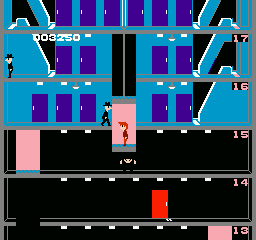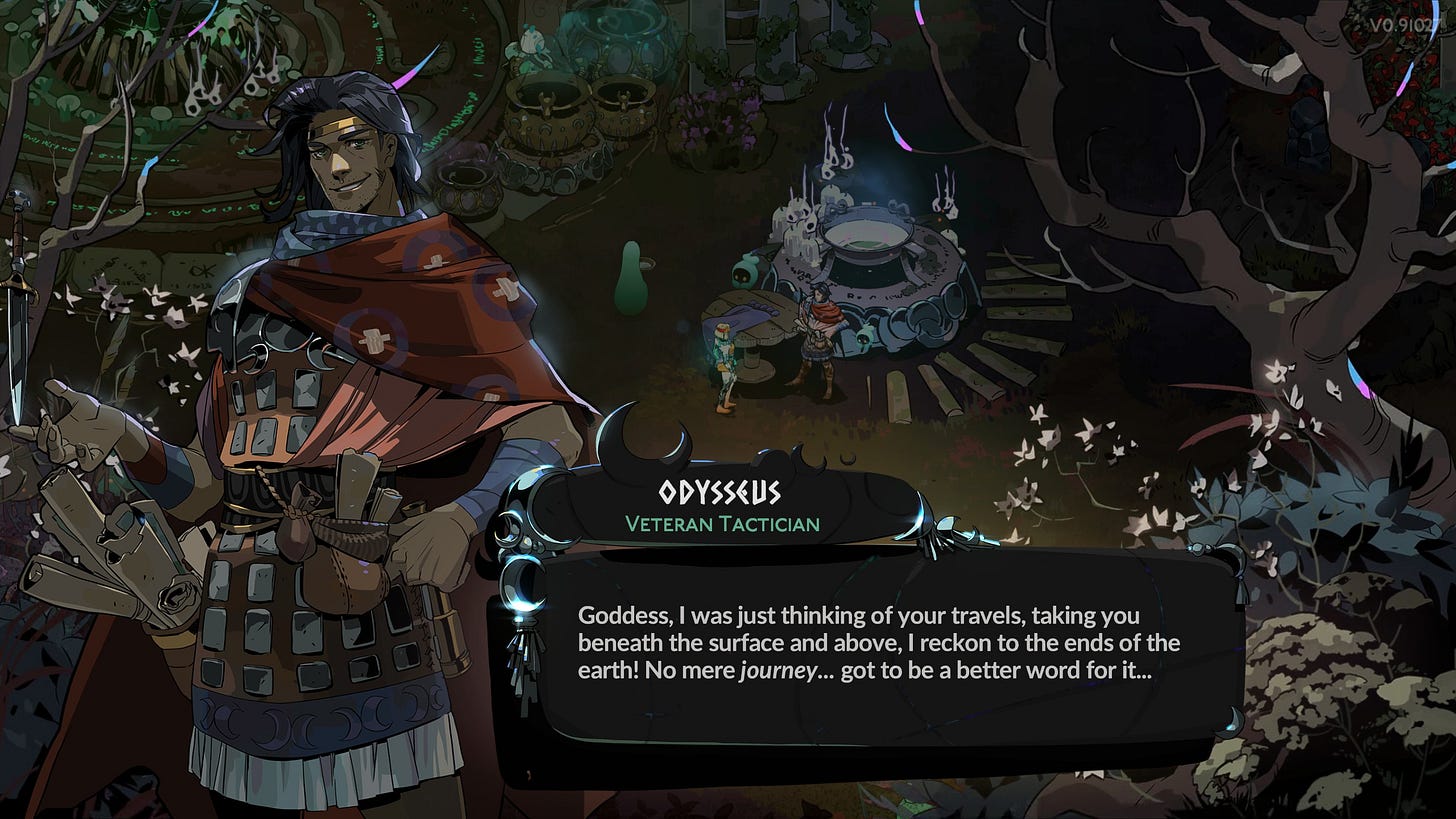Intro to Narrative Design
A quick guide to gamedev's most misunderstood role

One day, way back in the early years of my gamedev career, describing what I did in games could be very difficult. I found it easier to just call myself a writer, but even that didn’t help with some folks, like the older life insurance salesmen who worked a floor up from my studio.
Sometimes, it led to awkward conversations in the elevator, like this one from 2012 that drove me so crazy I had to write it down afterwards:
Insurance Salesman: "So, you get paid the big bucks to play games all day? Must be nice!"
Me: "The bucks aren’t so big. And it's not as much fun as playing games all day."
IS: "Well, what do you do?"
Me: "I'm a writer."
IS: "Oh, you do programming?"
Me: "No, I write."
IS: "Like, advertising?"
Me: "No, I write dialogue. For the game."
IS: "Oh, like listening to people?"
Me: "Yyyes? And also talking to them."
IS: "Oh, you're the guy who monitors the things people are saying when they play, and make sure they aren't using dirty words."
Me: "No, I don't do that. No one does that. I write the things the game says. Stories."
IS: "Huh. Games have those?"
Me: "Yup. I make the reasons why people are swinging swords at each other."
IS: "So, like a programmer?"
Me: "... sure. I program the words."
IS: "Must be nice playing games all day."
Me: "Must be."
Back then, ironically, I didn’t have the words to properly describe what I did in game development. Nowadays, the term is “Narrative Design”.
But even so, that’s a term not everyone understands or agrees about.
What does a Narrative Designer do?
Every studio has a different idea about what a Narrative Designer is. Sometimes it’s a fancy name for a writer. Sometimes it’s a designer who makes quests, or missions, or just generically “content”. Sometimes, it’s a director level position, overseeing the franchise IP, or the minute details of tone in every part of the game.

I’ve spent 18 years doing various jobs described as Narrative Design. In most cases, no matter how clearly the duties were described in the job listing, the first couple months of my job was spent carefully discerning exactly what they actually expected me to do, and what was or wasn’t overstepping my role. That’s because every studio makes games a little differently, and Narrative Design roles are often ones that fill in the gaps between more established processes.
If your job is to handle a concrete task like rendering particles or mechanics of combat, it’s easy to see where your job ends. If your job is to ensure the game tells a story well and conveys a cohesive experience, the edges get a little blurrier.
In day-to-day work, what I actually do as a Narrative Desigenr tends to shift depending on what’s needed. A few common tasks I’ve often done in these roles, in no particular order:
Write dialogue for NPCs, including situational barks, background chatter conversations, player-driven conversations, and full scripted scenes.
Write flavor text in a variety of in-world books, audio-logs, and other worldbuilding fluff.
Design quests/missions/content for players to do using their established gameplay actions, oftentimes with complex branching outcomes, building the content in the editor and with accompanying documentation on an internal wiki.
Script scenes and scenarios (usually in a proprietary visual scripting tool), often in the process of building and refining the above quests.
Revise lists of item names, affixes, and other descriptive text in the game for proper voice and tone.
Coordinate with animators and audio folks to plan out major cinematics and ensure we have the assets needed for their behavior.
Coordinate with other designers to know what player experiences they want to feel especially memorable, so that characters and quests can highlight them.
Coordinate with programmers and UI designers to improve conversation experiences so they aren’t just “pick each option from this list to hear everything.”
Playtest the game constantly to get a feel for how different sorts of players might be feeling at various points.
Obviously, it involves a lot of writing — and sometimes in a clunky version that can indeed feel a lot more like “programming the words” than I’d like to admit. But there’s a lot more involved as well. It’s inherently interdisciplinary, as you need to think about how your work can support every other developer’s part of the game — and how their parts of the game can reinforce the story and tone you’re building.
But this is all just describing the animal by its silhouette. We’ve talked about how narrative designers kind of fit into the messy process of the game development, but what is narrative design itself?

What is Narrative Design?
Broadly speaking, Narrative Design is the practice of building a system of elements that conveys a story as a user interacts with it.
That system could be the toys and rules of a game, or the scenes and artefacts of an immersive play, or the mise en scene of an amusement park ride. Hell, you could talk about the narrative design involved in making a haunted corn maze, or setting up the path through a department store. Everything can be presented in a story format, and stories are one of the main ways that humans relate to the world around them.
Like all forms of design, it requires an appreciation of human psychology, understanding of how context influences our perceptions, a lot of empathy for how different people might experience a situation, and a deep knowledge of the specific systems that you’re working with. It also requires a sense for the pacing and interplay of good storytelling and conversation.
My own introduction to this concept was in college, while I was studying creative writing and interactive art. There weren’t game design majors yet, and the term “narrative design” hadn’t been coined anywhere I had seen it, but I had the good fortune take a class called Building Virtual Worlds. There, interdisciplinary teams of three to five people worked together to build very short VR games that conveyed experiences and stories. It was taught by Randy Pausch, who had himself worked at Disney as an “imagineer” — their early term for a narrative designer.

I fell in love with the idea of building these experiences, because it captured the joy of collectively building stories that I loved in tabletop and live-action role-playing games. I’ve been exploring that realm ever since, whether it’s creating questlines for players in RPGs or building new gameplay systems to make conversations feel more engaging.
And it’s been a strange few decades as my colleagues and I experiment in the field of narrative design.
Where does Narrative Design fit into Making Games?
Interactive storytelling is a comparatively new artistic medium, and there’s still a lot of different approaches to it — and nowhere moreso than the game industry, with its constant waves of reinventing the wheel, burning out workers, and retaining very little institutional knowledge.
Between experimental approaches in the indie space and high-budget attempts at ultrarealism, narrative in games has a wealth of unexpected brilliance, as well as its frustratingly calcified trends. There’s a lot to celebrate already, and more progress to be made.

But ultimately, Narrative Design is just a lens that any gamedev can use to consider the craft of building a game. And if we want our games to have more meaningful connections with players, it’s a way of thinking that more developers should understand.
It can apply to the parts that are obviously connected to story and all those messy words. It works even better when paired with non-story communication with the player. And it offers insights into every other aspect of the game and how it reinforces or detracts from the whole experience. Hell, it can even apply to experiences reaching outside of the magic circle of the game itself.
In the next few weeks, I’ll go into a few of the areas that Narrative Design is generally used in game development, the challenges it faces, and ways we can solve them.
But for now, just know that it’s more than programming the words.


I for one can't wait to learn what narrative design is!